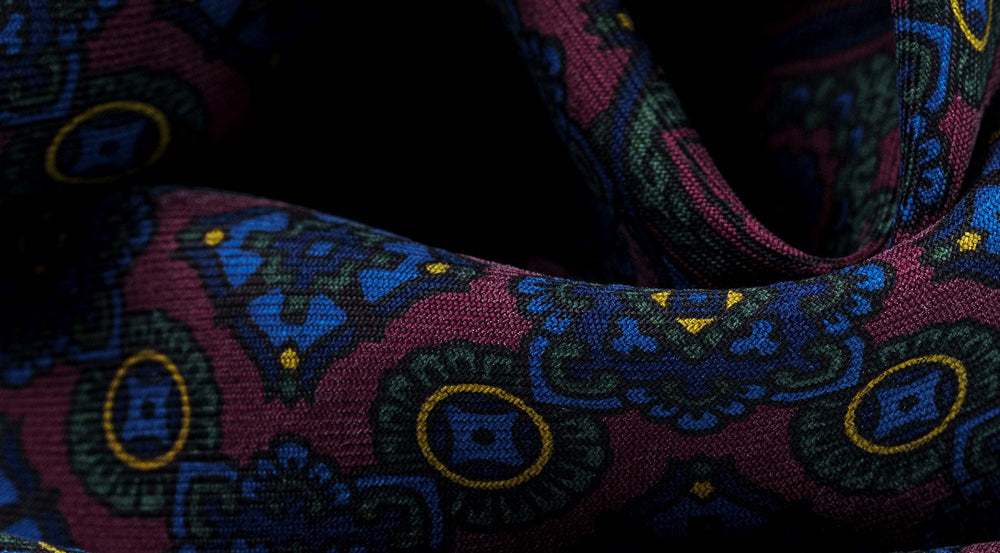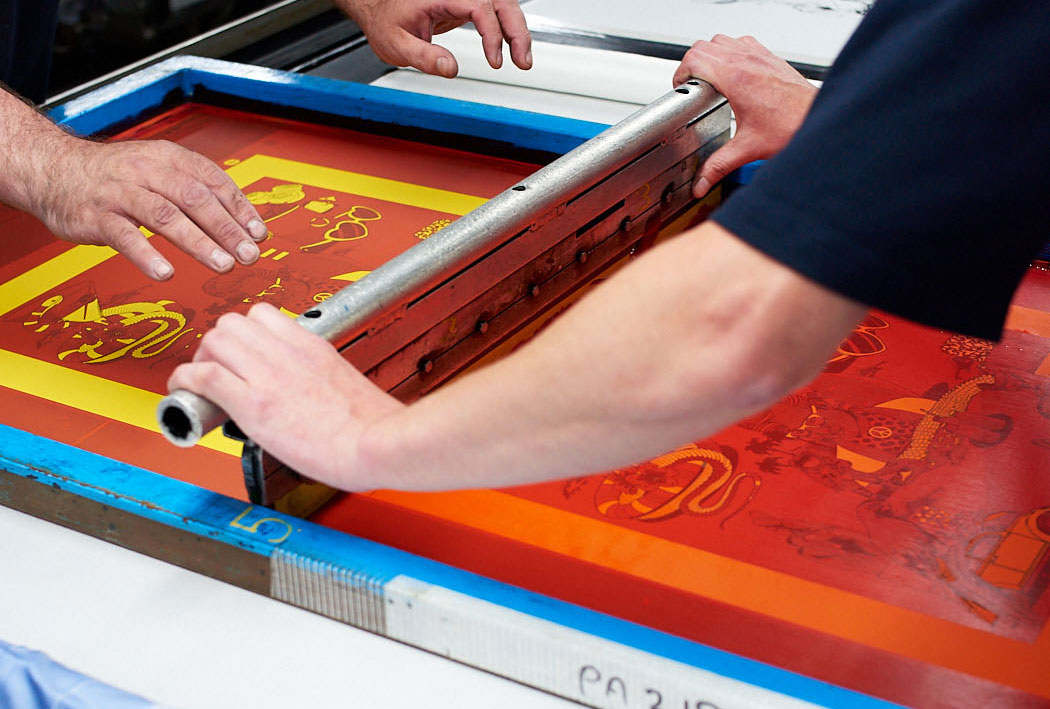The History of Madder Silk
Madder silk ties and accessories are quintessentially British, they provide a unique and superior quality that is incredibly distinguished and has a deliberately different handle. Read on to learn more about this historic and treasured technique.
SHOP OUR MADDER SILK COLLECTION


THE HISTORY OF MADDER SILK
The English Madder silk tie is recognised worldwide as an icon of British style. The “Madder” refers to the plant Rubia Tinctorum, from which natural dyes are extracted for the dyeing process.
The origins of the plant date back to 1500 BCE across various locations such as Africa, Greece, Italy, and Central Asia. Madder natural red dye is believed to be the earliest form of lipstick, discovered, by chance, when early Africans enjoyed eating the root. In ancient Egypt, madder was used to dye linen fabrics, while in ancient Rome, madder was used to dye wool and silk fabrics.

The roots of the madder plant produce dyes. Painting: Franz Eugen Köhler, Köhler’s Medizinal-Pflanzen (1897).
During the Middle Ages, madder became an important commodity in Europe, with the production of madder silk becoming a significant industry in many countries. In Italy, the production of madder silk was centred around the city of Florence, where the silk was dyed using a process known as "crocus." This process involved boiling the madder roots with alum and cream of tartar, and then soaking the silk in the resulting dye.
Madder silk also became popular in other European countries, such as France and England, where it was used to produce luxurious textiles for the aristocracy. In England, madder silk was particularly popular during the 17th and 18th centuries, with the production of madder silk becoming an important industry in the city of Norwich. The Norwich dyers were renowned for their skill in producing a range of shades of red and pink using madder, which became known as "Norwich red."
In the 19th century, the production of madder silk declined as synthetic dyes became more widely available. However, madder silk remained popular among artists and craftsmen, who appreciated the unique character of the natural dye. Today, madder silk is still produced in small quantities by artisans and textile enthusiasts, who value its rich color and cultural significance. While the natural madder root produced primarily red dyes, the modern dyeing process for madder can produce a wide array of rich, saturated hues. Most of these colours are on the darker end of the spectrum; for example colours like mustard, forest green, burnt orange, deep blue and violet, and of course, gold, navy and burgundy.

WHAT MAKES MADDER SILK SO SPECIAL?
Madder silk is special for several reasons. First and foremost, using the natural dyes made from the madder plant, give the silk a unique and rich colour. The natural dye process creates a depth and complexity of colour that cannot be replicated by synthetic dyes.
Another reason that madder silk is special is its historical and cultural significance. Madder has been used as a dye for textiles for thousands of years, and the production of madder silk was an important industry in many European countries during the Middle Ages and Renaissance. The rich cultural heritage of madder silk adds to its value as a material.
Madder silk is also prized for its softness, lustre, and durability. Silk is a luxurious and highly valued material in its own right, and the addition of the natural madder dye makes madder silk even more special.
The process of creating madder silk is a unique and skilled craft which requires expert knowledge of natural dyeing techniques, as well as an understanding of the properties of silk. The dyeing process can be complex, and the resulting colour can be affected by numerous factors. The expertise required to produce high-quality madder silk is what we think makes it incredibly special.

WHAT PATTERNS DO MADDER ACCESSORIES HAVE?
The process of creating madder prints involves applying the dye to the fabric in a pattern, often using a resist technique to create areas of color and areas of white or undyed fabric.
The resist technique used in madder printing can take many forms, such as block printing, stenciling, or hand painting. The resist material is applied to the fabric before it is dyed with the madder dye, creating a barrier that prevents the dye from penetrating certain areas of the fabric. Once the dye has been applied and the resist material removed, a pattern is revealed in the colored and uncolored areas of the fabric.

Madder silks are synonymous with Paisley designs. Paisley, a town in Scotland with a rich heritage of silk printing, had taken inspiration and artistic development from the stunning Kashmiri shawls which were introduced to Britain during the Empire.
Macclesfield, a small town in Cheshire has been a centre of silk production since the 18th century, and at its height, Macclesfield was one of the most important silk towns in England.
The silk industry in Macclesfield began in the early 1700s, when silk weaving was introduced to the town. Many of the weavers were Huguenot refugees who had fled France due to religious persecution. These skilled craftsmen brought with them the knowledge and expertise needed to produce high-quality silk fabrics.
Utilising Madder dyes, the textile merchants of Macclesfield developed small designs, to rival Scotland's paisleys.
Paisley or Geometric madder ties are often seen as a unique and stylish alternative to traditional stripe ties, often seen throughout US college campuses and universities since the 1930s.
HOW TO WEAR YOUR MADDER SILK ACCESSORIES?
The Madder tie or pocket square is not only a statement piece and bold in design, but it is also incredibly versatile. In the most general terms, madder ties are particularly well-suited for Autumn, although they can be worn year-round depending on your colour palette of choice.
Madder silks are usually combined with rich, textured jacket fabrics such as wool or tweed and paired with an Oxford button-down shirt for a classic British heritage look. Most heavier fabrics with some heft and texture will pair well with madder silk ties due to the richness within the hand screen print of the tie.
Outside of rich, darker tones, the beauty of Madder is that it will sit comfortably with almost any colour of navy, blue or grey, while it will also lift an array of other shades. The ties and distinctive patterns match beautifully with a smart casual look, sportscoat, or even a country suit. For dressier occasions, rusts, golds and burgundy colours work very well with the lighter shades of summer cotton & linen blazers.
HOW TO FOLD A MADDER SILK POCKET SQUARE
What we love about any Madder Silk Pocket Square is its versatility and how the prominent border, combined with the geometric print can add a true statement to any jacket.
How you fold a pocket square determines whether it adds a subtle accent, or can be a flamboyant addition of colour, becoming the focal point of your outfit.
If you want to explore the different types of pocket square folds you can use with this collection then head over to our YouTube channel. We have a dedicated Pocket Square Fold Series covering all the classic folds you can use on this pocket square and any others within our collection.



